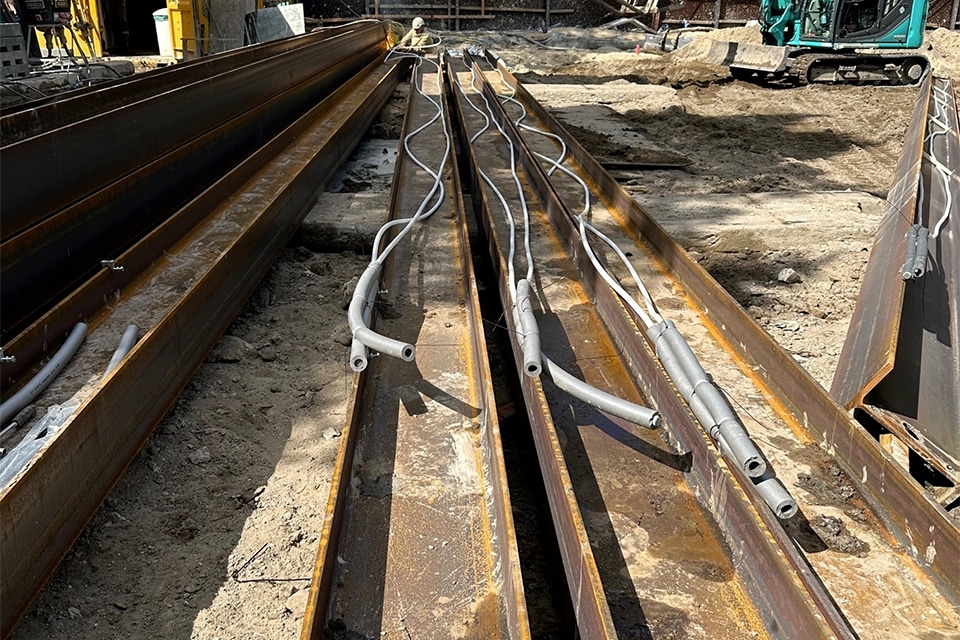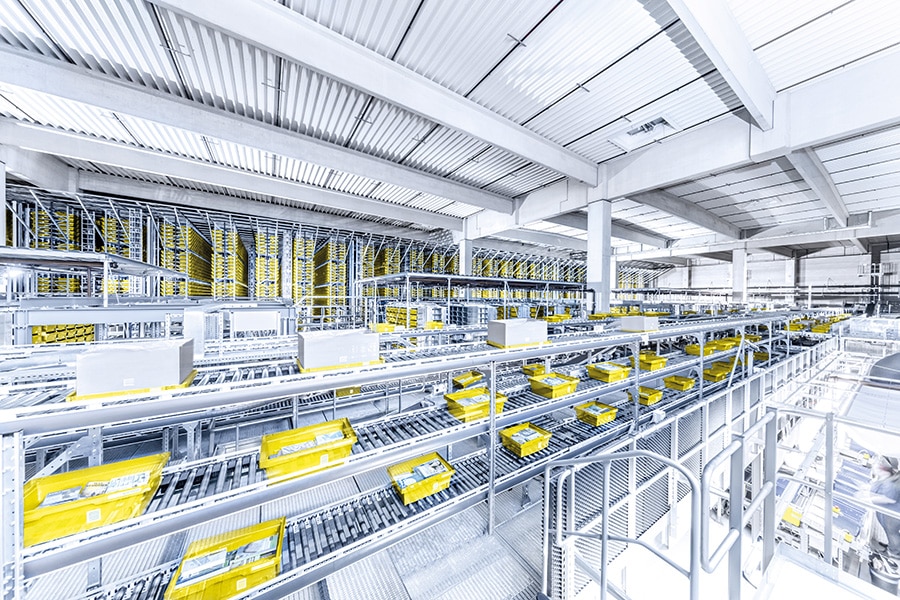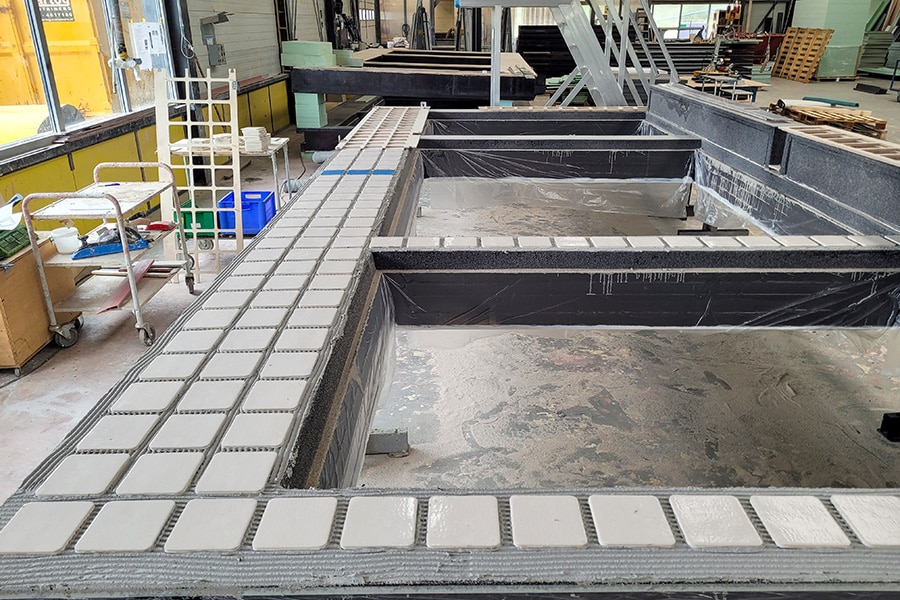
Foundation on CSM Energy Walls
Smart CSM technology combines cofferdam wall, foundation and energy generation
The demand for renewable heat production and energy in general is increasing worldwide. Classic geothermal sources are often expensive due to the required drilling depth (0.5-1.5 km for shallow drilling), limited available space and associated environmental law. "Shallow geothermal heat exchangers consisting of thermally activated underground structures are an interesting alternative in this case," knows Djordy van den Eijnde, project manager at BodemBouw. "The CSM (CutterSoilMix) Energy Wall is such an innovative, underground and thermally activated construction."
A CSM wall is a soil and water retaining wall formed in the ground. It is realized by means of a CutterSoilMix cutter that vibration-free mixes the existing soil with a cement mix. The liquid CSM panels are reinforced by lowering steel reinforcement beams into them, which give the CSM wall the necessary strength. "By milling and connecting the CSM panels together, a continuous wall of concrete is realized, so the existing base is a component," Van den Eijnde says. "The CSM system is completely vibration-free, can be used in any foundation and is therefore ideally suited for inner-city projects such as construction pits for parking garages of new construction complexes. Because of the thickness (550-750 mm) and rigidity of the CSM wall, it can be applied not only as a soil and water retaining structure but also as a foundation. This creates an optimization in the pile foundation." In cooperation on several projects, BodemBouw has converted the pile foundation to a solution with a foundation CSM wall and foundation CSM barettes under the basement box. "In this way, the new construction object is founded on one and the same system."

CSM Energy Wall
But the CSM wall can also be applied as a CSM Energy Wall, Van den Eijnde explains. "In that case, PE loops (diameter 25-40 mm) are connected to the reinforcement beams in the CSM wall. The loops are connected to a heat pump that circulates a refrigerant (water + glycol) through the loops, which is heated by the surrounding soil and groundwater. The heat is then upgraded by the heat pump to usable temperatures and delivered to the delivery system in the property to be heated." Conversely, the CSM Energy Wall is also suitable for cooling buildings in the summer, when the ground is actually colder than the building.
With its CSM Wall and CSM Energy Wall, BodemBouw deviates from traditional construction methods. "Our construction is used to using traditional systems, such as steel sheet pile walls, to create a building pit," says Van den Eijnde. "Then pile foundations are installed and WKO wells are drilled, after which the basement pit is poured and construction of the residential tower or apartment complex is started. The number of systems being applied underground in this way is increasing rapidly. Moreover, the systems are becoming increasingly large. This puts pressure on the space available underground, but above all it causes unnecessarily increasing costs, longer execution time and more CO2 and nitrogen emissions."

'Electrification as 'egg of Columbus' is a wash'
"One of the solutions to the CO2 and nitrogen problem in construction is the transition to all-electric equipment. Our government itself sees electrification as the 'egg of Columbus' and is including it as a precondition in its permit processes in more and more places," said Van den Eijnde. "BodemBouw has now discovered that electrifying equipment is not a short-term solution, because there is nowhere near enough electricity available and our electricity grid is not ready for it. Replacing all combustion engines with electric motors may seem like a good idea on paper, but in practice it is unfortunately a wash."
Optimizing construction methods
What hardly anyone thinks about but what BodemBouw is highly committed to is optimizing construction methods below ground. "Above ground we have now learned to build as efficiently as possible, but under ground a lot is still done double or even triple," says Van den Eijnde. As an example, he cites the steel sheet pile wall, which can be used as a soil and water barrier. "A steel sheet pile wall cuts like a knife in butter. You can't put a vertical load on this, which means that at about 10 cm distance already a thick pile foundation has to be drilled. Moreover, at 5 cm distance from the foundation pile, a WKO source must be added, provided this is structurally and permit-wise allowed. As a result, the subsoil is full of techniques that, while necessary, also emit a lot of CO2 during implementation. Our CutterSoilMix (CSM) panels and CSM Energy Wall offer a sustainable, efficient and low CO2 solution for this."

Saving CO2, materials, time and costs
With BodemBouw's solution, a CSM wall is installed in the ground that not only acts as a soil and water barrier, but can also carry the vertical load. This eliminates the need for the foundation pile next to the sheet piling, says Van den Eijnde. "When you start vertically loading the CSM wall on the outside, the pile plan can also be filled out differently. Here, for example, it is possible to base the entire building on one and the same CSM system. In this way, settlement differences are cleverly eliminated. Moreover, considerable savings can be made on construction costs. That also makes our solution economically interesting. In addition, significantly fewer materials are needed, which also meets the sustainability ambition of more and more clients." The beams that BodemBouw lowers into its CSM wall can also be fitted with PE loops if required, so that water can be stored in the wall and thus the CSM wall also serves as an Energy Wall.

Early involvement
To make foundations on a CSM wall or CSM Energy Wall possible, it is important to consider this solution already in the planning and development phase, Van den Eijnde knows. "We like to come to the table with the developer, consultant and/or chief structural engineer at a very early stage to agree on the design principles for this." Meanwhile, the first successful projects with CSM foundations have been delivered. As an example, Van den Eijnde mentions new building complexes Cosun 4 and Cosun 5 on the Cosun Park in Breda, as well as various projects with the CSM Energy Wall in Amsterdam.




